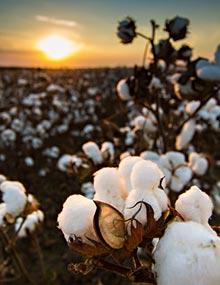

Plant Growth Regulators for Cotton
Reviewed
Plant growth regulators help manage cotton growth to improve yield, quality, and boll retention. Learn how to apply them effectively for optimal results.

Commodity Futures and Options Terminology
Revised
Check out this glossary of commodity futures and options keywords and their definitions to broaden your understanding of agricultural commodities markets.
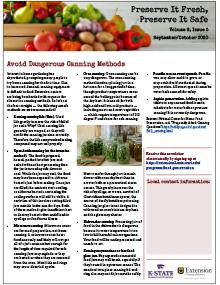
Preserve It Fresh, Preserve It Safe: 2020, No. 5 (September/October)
New
Home gardening interest has surged and canning tools are scarce. This issue addresses unsafe canning methods.
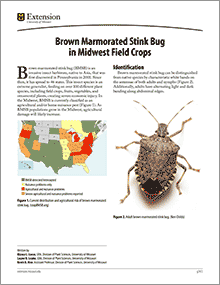
Brown Marmorated Stink Bug in Midwest Field Crops
New
Learn how to identify, manage, and reduce damage from an invasive stink bug species affecting corn, soybeans, and other Midwest field crops.

Long Hedge Example With Options
Revised
See examples of how to place a long hedge in the options market to lock in a price when buying an agricultural input used on your farm or agribusiness.

Agricultural and Entrepreneurial Factors Driving U.S. Food Manufacturing Startup Locations
New
Is food manufacturing a viable rural economic development strategy? Are food manufacturing startups a natural extension of the dynamic driving interest in local foods at the farmgate? Find out in this University of Missouri Extension guide.
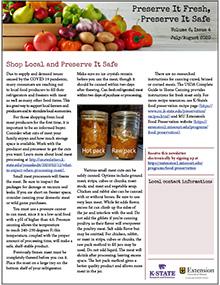
Preserve It Fresh, Preserve It Safe: 2020, No. 4 (July/August)
New
Learn safe methods for canning meat and fish, including thawing, packing, and pressure canning techniques.
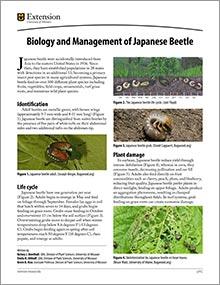
Biology and Management of Japanese Beetle
New
Learn to identify and manage Japanese beetles, a common pest affecting over 300 plant species, including fruits, vegetables, and turfgrass.
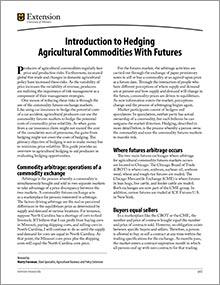
Introduction to Hedging Agricultural Commodities With Futures
Revised
Hedging farm commodities in the futures market can reduce producers' price and production risk. Learn about hedging, hedging costs and when to hedge.

Short Hedge Example With Options
Revised
Learn how to place an output (short) hedge in the options market to reduce price risk when selling a product or commodity produced by your farm or business.
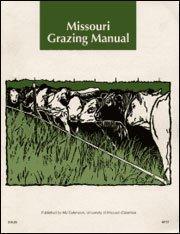
Missouri Grazing Manual
Reviewed $20
Learn how soil, forages and animals interact in grazing systems, and get ideas for improving pasture quality and extending the grazing season for beef or dairy.
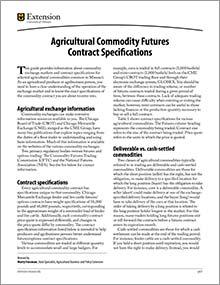
Agricultural Commodity Futures Contract Specifications
Revised
Farmers and agribusinesses, learn about commodity exchange markets and contract specifications for selected farm commodities common to Missouri in this guide.

Long Hedge Example With Futures
Revised
Learn how to place a long hedge in the futures market to reduce the price risk associated with buying an input in this guide for farmers and agribusinesses.

Third Class County Population Change and Budget Fiscal Ratios
New
Population change can majorly impact a county budget because it can affect whether per capita costs of providing public services are increasing or decreasing. Learn about the long-term trends in population that can affect the fiscal condition of counties.

Working Together to Reduce Food Waste — Extension Leader’s Guide
Editor’s note
The following abstract describes a publication that is only available as a downloadable PDF.

Ballard Local Government Series
Revised
John Ballard was a lifelong resident of Missouri who earned a master’s degree in community development from MU in 1971 and then worked for MU Extension as a local government specialist for 21 years. These publications are based on his work
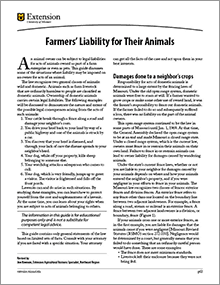
Farmers’ Liability for Their Animals
Revised
Animal owners can have legal liability for acts of their livestock or pets. Learn about animal owner responsibilities, how to protect yourself from a lawsuit.
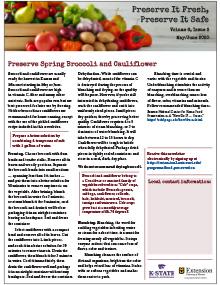
Preserve It Fresh, Preserve It Safe: 2020, No. 3 (May/June)
New
Get tips on freezing, dehydrating and blanching brocolli and cauliflower; a recipe for pickling cauliflower; and a warning about why so-called dry canning is not safe in this University of Missouri Extension newsletter.
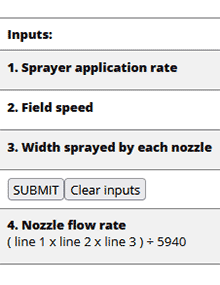
Nozzle Flow Rate Calculator
New
Use this calculator to determine the nozzle flow rate when preparing to spray pesticides on a field.

Blood Vessel Poster
New $10
Use this poster to illustrate the difference between a healthy and an unhealthy blood vessel.

Human Water Cycle Poster
New $10
Use this poster to illustrate the importance of water in the body.

Preserve It Fresh, Preserve It Safe: 2020, No. 2 (March/April)
New
Learn safe, tested methods to preserve food at home, avoid common canning errors—like wrong jar size or improper processing—to ensure success.

Could Online Sales Be a Direct Marketing Opportunity for Rural Farms?
New
Selling food online can help rural farms reach more customers and reduce costs, especially for new farms offering value-added products.
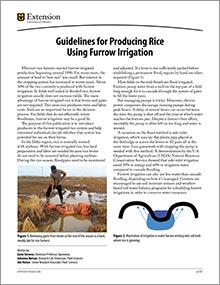
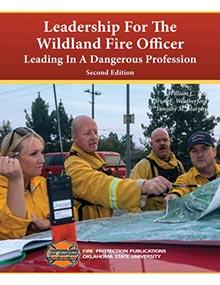
Leadership for the Wildland Fire Officer: Leading in a Dangerous Profession, Second Edition Manual
New $69 to $81
This manual addresses various supervisory and leadership positions of wildland firefighting outlined by the National Wildfire Coordinators Group (NWCG). Chapters 1–5 are an excellent tool for any current or future leader in fire service. Chapters 6–9 deal with the situational and tactical processes a wildland fire officer faces daily. Following Chapter 9 is an addendum containing 15 after-action reports of “Fires We Should Not Forget” as well as the lesson learned from each fire.